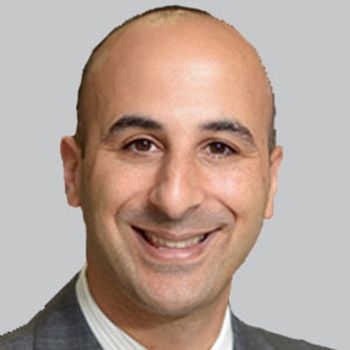
Percentage of daily energy from ultraprocessed food was associated with cognitive decline in participants younger than 60 years, suggesting the importance of preventive interventions in middle-aged adults.

Marco Meglio, Assistant Managing Editor for NeurologyLive, has been with the team since October 2019. Follow him on Twitter @marcomeglio1 or email him at [email protected]

Percentage of daily energy from ultraprocessed food was associated with cognitive decline in participants younger than 60 years, suggesting the importance of preventive interventions in middle-aged adults.

More than half of the patients who reported at least 1 trauma-related nightmare showed decreases after starting brief behavioral treatment.

After nearly a year of treatment with fenfluramine, more than half of patients with Lennox-Gastaut syndrome demonstrated at least a 50% reduction in drop seizure frequency.

The professor of dementia and executive dean of the Faculty of Health at the University of Plymouth provided perspective on the SYMBAD trial, and eliminating the use of mirtazapine and carbamazepine as medications to treat Alzheimer agitation.

Martina Bebin, MD, MPA, professor of neurology, University of Alabama at Birmingham Epilepsy Center, discussed Infantile Spasms Awareness Week, the strides made within the field, and the emphasis on early and accurate diagnosis.

After showing robust inhibition of biomarkers associated with integrated stress response, the eIF28 modulator will be assessed alongside several other potential agents in the HEALEY ALS Platform trial.

Over a 12-week treatment period, investigators found no significant differences in mean Cohen Mansfield Agitation Inventory scores between mirtazapine and placebo, with similar rates in adverse events.

Across 3 trials in patients with Alzheimer disease agitation, brexpiprazole doses of 2 or 3 mg/day was safe and showed a statistically significant improvement vs placebo in agitation.

Over a 12-week treatment period, irsenontrine was well tolerated across both amyloid positive and negative patients, with no significant difference in pharmacodynamic responses or change in central nervous system biomarkers.

Over a 6-month period, percent change and mean change in brain amyloid levels significantly favored donanemab over aducanumab (Aduhelm; Biogen).

The PDUFA date for SRP-9001, developed in partnership between Sarepta and Roche, is set for May 29, 2023. The BLA was submitted for accelerated approval.

In the pivotal phase 3 Clarity AD trial, lecanemab (Biogen) demonstrated significant impacts on primary and secondary end points, with additional promising results on biomarker analyses and safety.

In a post-hoc analysis of the ADVANCE trial, atogepant 30 and 60 mg produced significant improvements in outcomes on Migraine-Specific Quality of Life Questionnaire and Activity Impairment in Migraine-Diary domains.

Treatment with the investigational agent resulted in improvements in Alzheimer disease agitation, as well as significant delays in time to relapse and prevention of relapse.

The relative risk of epilepsy or seizures after COVID-19 infection, compared with influenza infection, was more marked amongst children and non-hospitalized individuals over the 6-month time horizon.

Nearly 40% of patients treated with CBT-I met the Athens Insomnia Score criteria for remission after 8 weeks of treatment compared with slightly above 10% of those on sham.

Peginterferon beta-1a, a pegylated form of interferon designed to maintain biologic effects in the body for longer periods, is being evaluated against CinnaGen’s interferon beta-1a formulation, CinnoVex.

NRTX-1001, an injectable suspension of high-purity inhibitory neurons, is currently being assessed in a phase 1/2 trial that includes a dose-escalation period comprising of 10 individuals with mesial temporal lobe epilepsy.

Compared with conventional treatments, which included routine pharmaceutical treatments or occupational therapy without exercise, aquatic therapy showed several benefits in physical, cognitive, and psychosocial fatigue for patients with MS.

Nearly 95% of patients treated with vidofludimus calcium were free from 12-week confirmed disability worsening events at week 96 of the open-label extension trial.

Over a 12-week treatment period, treatment with continuous subcutaneous carbidopa/levodopa resulted in significantly greater increase in ON time and reduced OFF time, while demonstrating a safe profile.

ACU193, an antibody developed based on its selectivity for soluble amyloid-ß oligomers, is currently being assessed in a phase 1 trial, with a potential phase 2/3 trial in the near future.

Through a culmination of previous research, the International Advisory Committee on Clinical Trials in Multiple Sclerosis suggests that multiple sclerosis disability progression is not caused by a single uniform disease mechanism but a combination of several mechanisms that play out variably over time.

Compared with placebo, a greater proportion of patients on rituximab met the primary end point of minimal disease manifestations at 16 weeks, and demonstrated favorable results on several secondary end points.

US census geographic regions drove differences in both potentially curative and palliative surgery types after correcting for other characteristics.

At 12 months, patients with congestive heart failure and/or left atrial enlargement had an atrial fibrillation detection rate of 23.4% vs 5.0% for patients with neither attribute.

Six months after hospital discharge, COVD-19 headache was more frequently observed in those infected with the Delta variant vs Wuhan or Alpha variants.

The codirector of the ALS Center at Washington University School of Medicine in St. Louis provided perspective on the phase 3 VALOR findings of tofersen, an antisense agent currently under review to treat SOD1-mutated ALS.

The newly announced prospective, randomized, placebo- and sham-controlled study, will include 150 patients, ages 18 to 55 years, with documented patent foramen ovale and a history of more than 1 migraine headache day per week.

Evidence of therapeutic benefit for zavegepant was observed on multiple secondary end points, including return to normal function at 30 min postdose, sustained pain relief, and sustained pain freedom.